![]() One of our field trips in my Fluvial Processes class takes the students to the lower reaches of Mallard Creek, the urban stream that drains the northern portion of Charlotte, including our campus. For most of its length, Mallard Creek is highly incised, so it’s quite a surprise to see the stream near its mouth, where it is more free to meander through a floodplain forest. For their field exercise, the students measure meander geometry and plot it against the classic Leopold, Wolman and Miller relationships, they attempt to identify bankfull channel geometry, and they contemplate the effects of wood on channel morphology.
One of our field trips in my Fluvial Processes class takes the students to the lower reaches of Mallard Creek, the urban stream that drains the northern portion of Charlotte, including our campus. For most of its length, Mallard Creek is highly incised, so it’s quite a surprise to see the stream near its mouth, where it is more free to meander through a floodplain forest. For their field exercise, the students measure meander geometry and plot it against the classic Leopold, Wolman and Miller relationships, they attempt to identify bankfull channel geometry, and they contemplate the effects of wood on channel morphology.
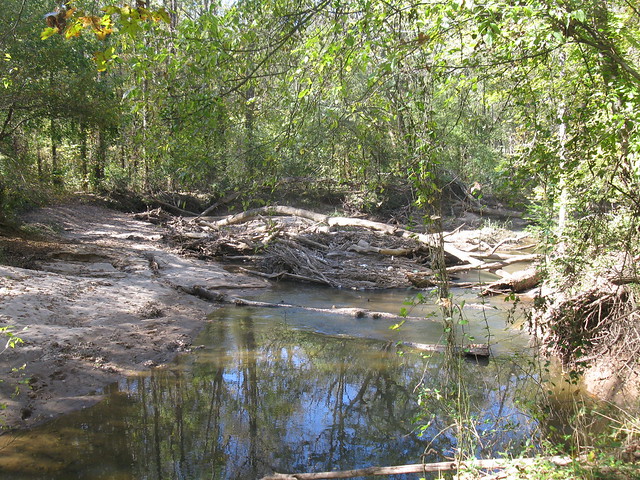
Looking downstream at the same wood jam as above. Notice how much smaller wood (and trash) has piled up against the big keystone logs.
Wood is perhaps the most striking feature of this reach of Mallard Creek, because it is everywhere, and because it is profoundly shaping the channel geometry and meandering behavior. So it is appropriate that Mallard Creek had an important role in the scientific recognition of the importance of wood in shaping fluvial systems. A 1979 article by Ed Keller and Fred Swanson, “Effects of large organic material on channel form and fluvial processes“, is the fifth most cited paper in geomorphology, according to an analysis done by Martin Doyle and Jason Julian in 2005. As part of their analysis, they asked the authors of the highly cited papers to speak to what inspired the work. Here’s what Keller said:
I first recognized the importance of large woody
debris while doing PhD work on pools and riffles in
Wildcat Creek near Lafayette, Indiana in 1971. I observed
that the debris formed a jam that backed up
water at high flow. The backwater caused a chute to
form across a bend, facilitating a meander cutoff. I
nearly forgot this until starting as a new Assistant
Professor at the University of North Carolina at Charlotte.
I was looking at Mallard Creek near the university
for a site to study pools and riffles. The floodplain
was forested, and I was complaining to myself that I
couldn’t find a “natural” site without large woody
debris interfering with the morphology I was looking
for. Then it happened—I heard a large groan followed
by a loud cracking. I walked around a bend just in time
to see a large tree fall into the stream with a great
splash! I suddenly had the a-ha–this is “natural”–these
streams with forested floodplains and lots of trees on
the banks are greatly modified by large woody debris
that enters the active channel! Then in 1973, I moved
to the University of California, Santa Barbara, and
started work in the redwood forest of northwestern
California where the woody debris that ends up in
streams is truly gigantic. I contacted Fred Swanson,
who was working for a US Forest Service Research
Laboratory at Oregon State University, and suggested
we write a paper on the role of large woody debris on
stream channel form and process. Fred had been working
for several years on large woody debris in streams
of the Oregon Coast Ranges. We had a great collaboration
at just the right time for the emerging field of
forest geomorphology.
I haven’t seen a tree fall into Mallard Creek, but in the five years I’ve been bringing my class to this site, I’ve seen some pretty remarkable changes. The photos below show a meander that cut off sometime between May 2010 and October 2011. In May 2010, the “new” channel (on the left) existed but was very narrow and didn’t carry water at low flow. Now, the “old” channel (on the right) is largely sedimented (and wood-jammed) in and carries only a trickle of water at low flow. While the meander would likely have cut off at some point in the future, my interpretation is that a series of large wood jams in the old channel backed up water during high flows, increasing overbank flooding, and greatly accelerating the cut off process.

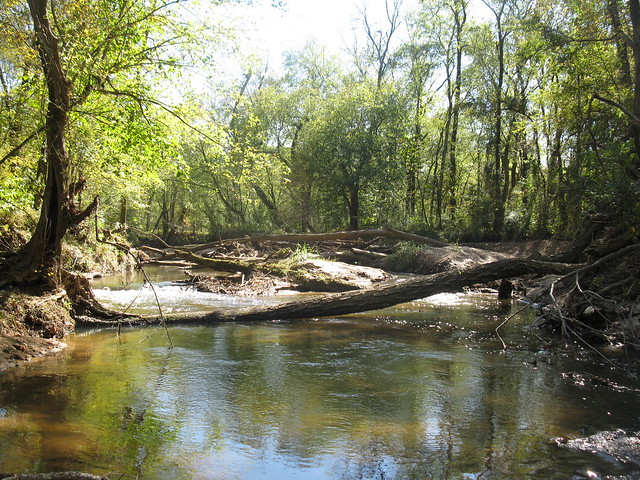
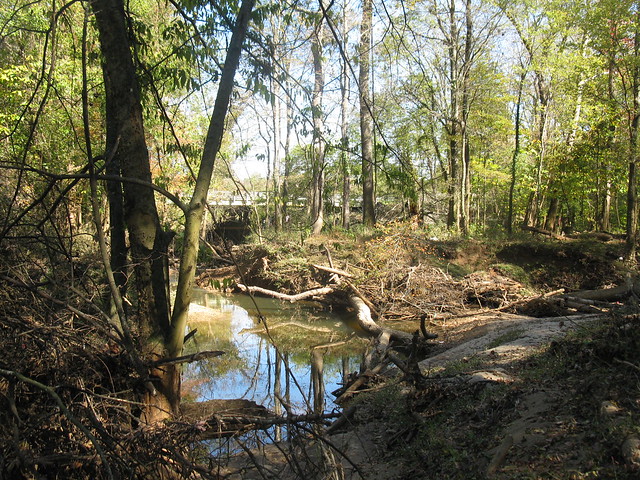
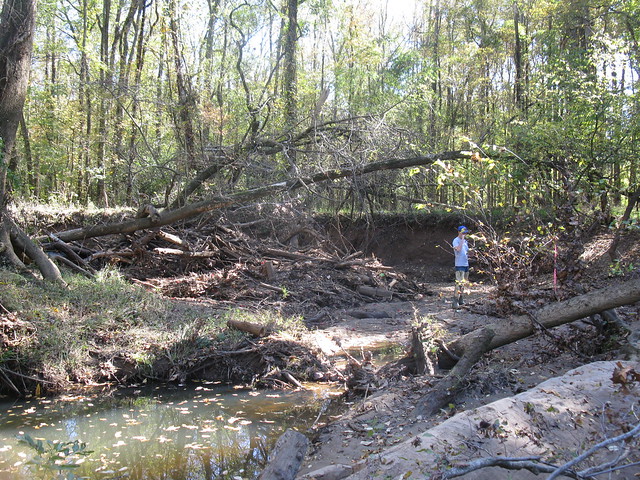
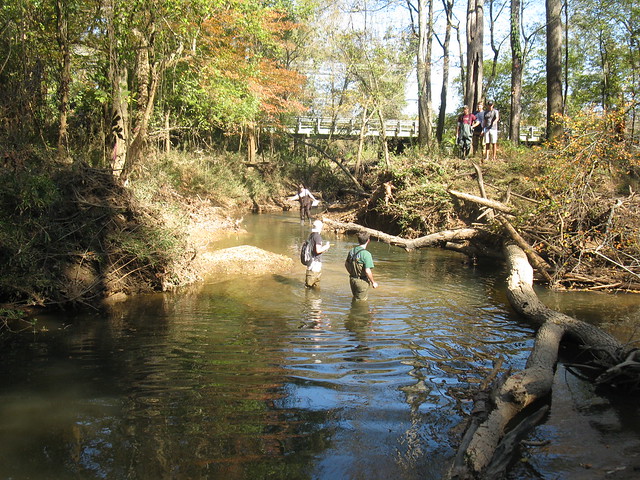


Comments (3)